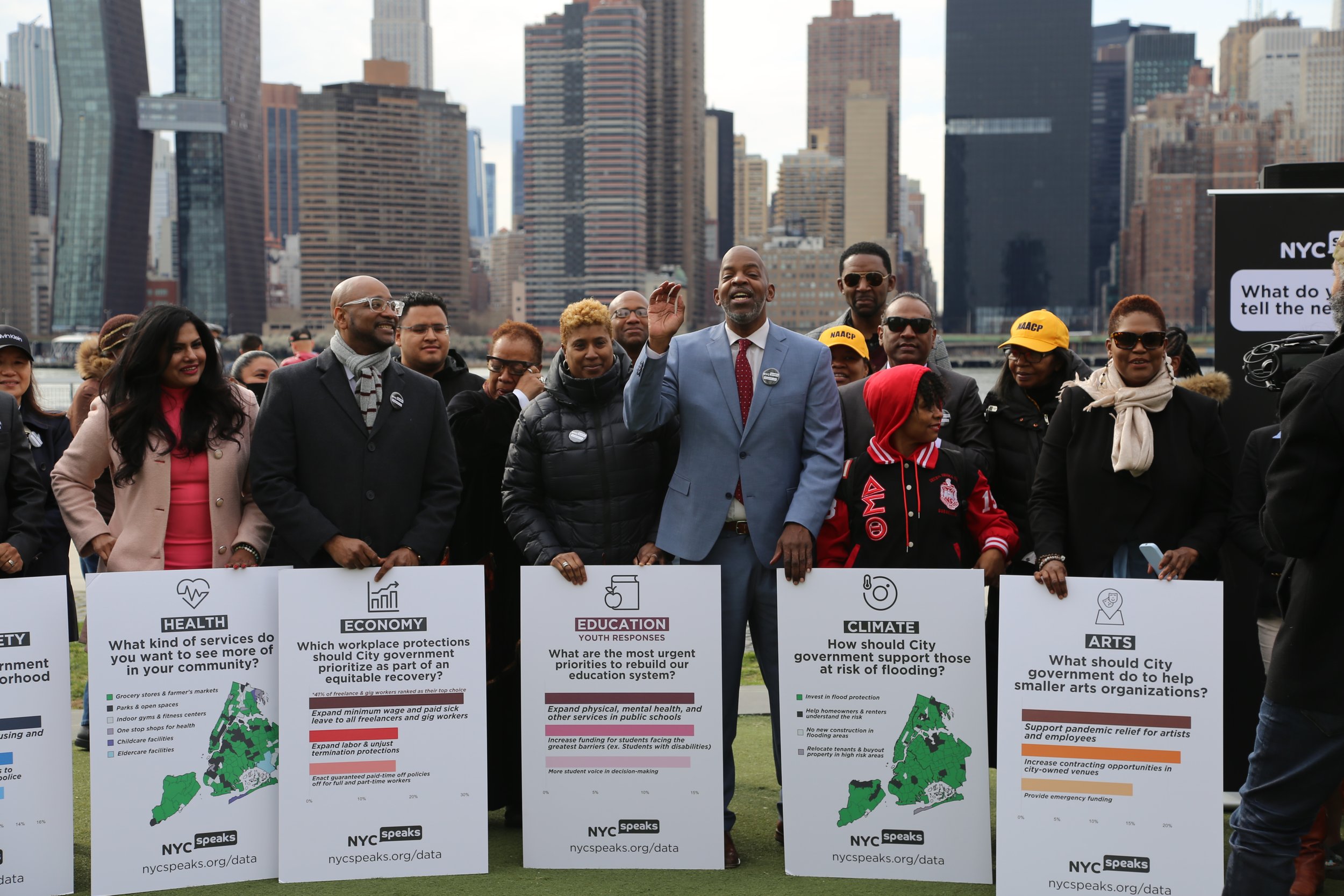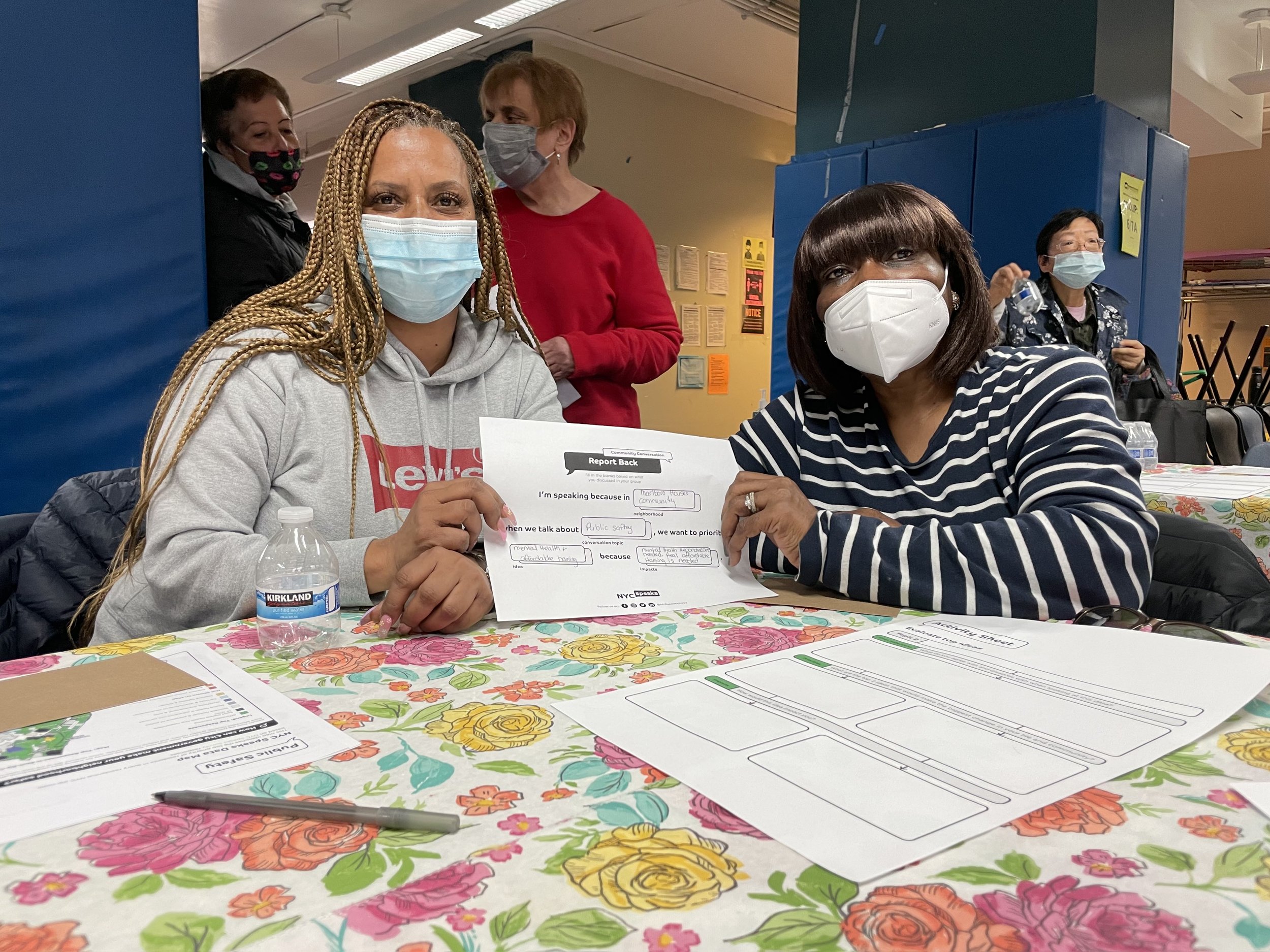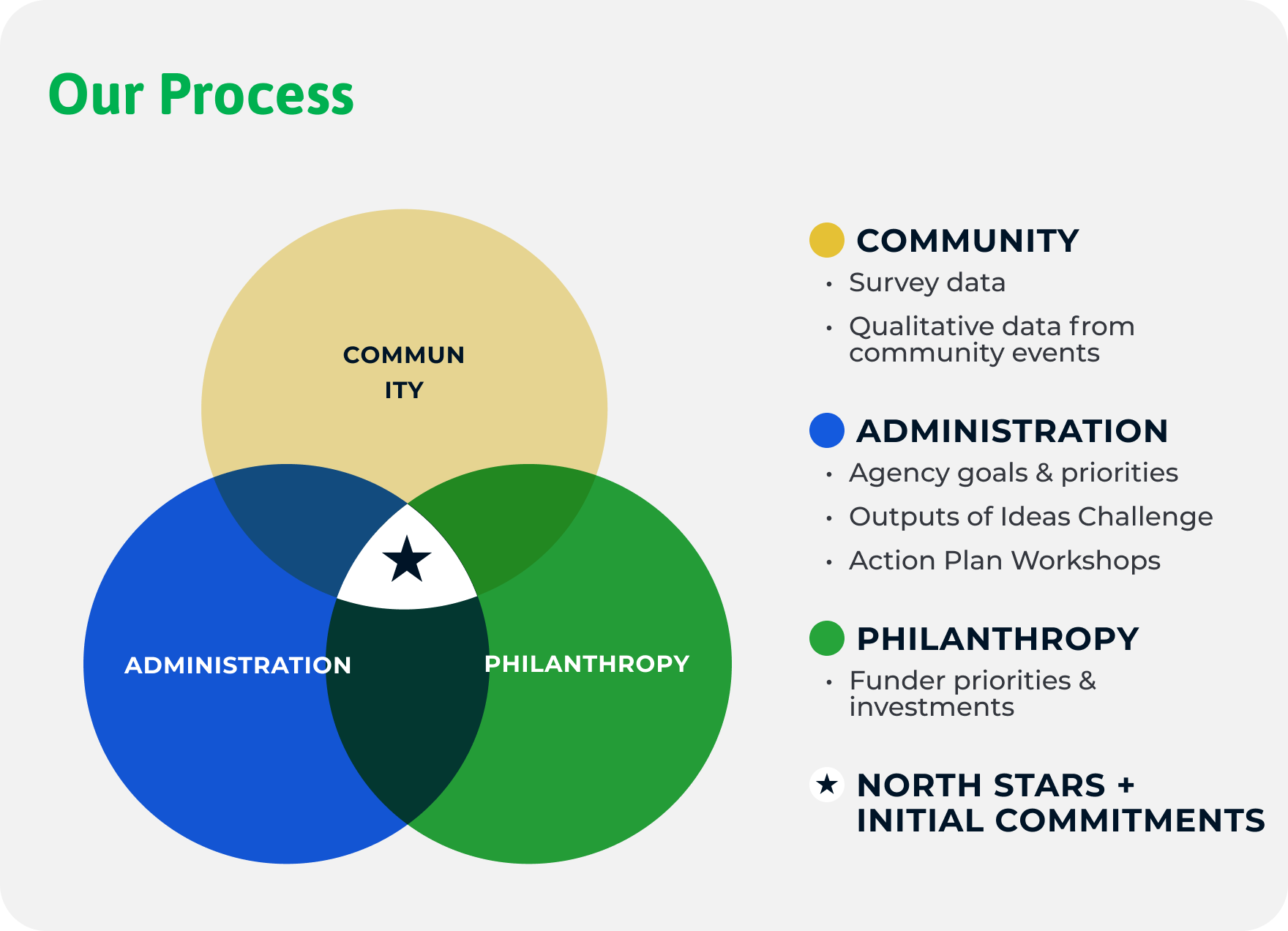
New York, NY
HR&A adapted the Talking Transition model to lead the project management and design of NYC Speaks, a public-private partnership between the City of New York, a civic coalition of everyday New Yorkers, and community-based organizations. The engagement process included the largest issue-based policy survey in NYC, more than 220 community led conversations to build on survey data, an “ideas board” for municipal workers, and Action Plan Workshops with government, non-profit, and philanthropy leaders. The resulting NYC Speaks Action Plan includes an initial set of commitments across five priority action areas.

Challenge
In the wake of a lingering pandemic and facing the most complex challenges NYC has ever experienced as a city, a new mayoral administration was taking office in 2022. Voices from inside the mayoral transition team as well as from the philanthropic community, civic institutions, and community-based organizations across the City were calling for a major reinvention of public engagement across New York City government.
Although almost every New York City agency engages with residents, engagement is understaffed and not coordinated among the 50+ city agencies, resulting in duplicate, overlapping, and contradictory engagement efforts. This impacts most Black, brown, and immigrant communities across the City which face the steepest barriers to influencing how decisions are made in city government.
A consortium of foundations and the newly formed Mayor’s Office of Strategic Initiatives called on HR&A to adapt the Talking Transition model to catalyze a new kind of partnership with community leaders across new NYC—to set the tone for how the new administration can work directly with communities to co-create the kind of bold and holistic solutions that are commensurate with the complex challenges we face as a city.
Response
HR&A designed NYC Speaks to amplify the voices of New Yorkers on critical policy issues by using a unique “inside-outside” methodology that simultaneously engaged three key stakeholder groups—the community, the mayoral administration, and civic institutions—to answer our primary research question: what are the most strategic policy actions that respond to residents’ biggest priorities? Throughout, NYC Speaks focused on driving participation in communities that are too often left out of decision-making processes and disproportionately shaped by disparities.
From the beginning, NYC Speaks was organized with multiple entry points for those interested in taking part. We began by innovating on the idea of a project "steering committee". NYC Speaks created a Civic Policy Council with over 80 members, representing a diverse cross-section of New Yorkers, including community leaders, leaders of civic organizations, and credible messengers at the neighborhood level. This group was provided direct support and technical assistance to be able to collaborate and shape the project's outreach strategies and research agenda, including providing input on the design of the large-scale survey.
Our process was to conduct a rigorous, data-driven assessment of priority issues and policy actions for a statistically representative sample of residents while conducting a parallel “bottom up” assessment of policy priorities for people inside of city government (from entry-level city employees to senior leaders) and powerful philanthropic and civic institutions.
We analyzed:
community-generated data
administration plans and priorities
philanthropic focus areas
From these inputs, we identified overlapping policy priorities and brought together knowledgeable people inside and outside city government to craft implementable policy actions that are responsive to those priorities.
Citywide Survey: NYC Speaks asked for New Yorkers’ input on 27 high-impact policy questions across 10 issue areas. Over 80 members of the Civic Policy Councils--made up of individuals passionate about our city, from restaurant owners to artists, religious leaders, teachers, activists, hospital workers, and more--helped to develop research questions, refine the survey instrument, and distribute the survey through their networks. The survey was further informed by the expertise of our philanthropic partners and review of the new administration’s stated priorities.
The survey also captured the voices of vulnerable populations, such as those living in public housing, those experiencing homelessness, previously incarcerated individuals, and members of the disabled community. The NYC Department of Education (NYC DOE) adapted the survey for high school students and promoted it in classrooms across the city, contributing 18,400 of the total responses.
Community Conversations: NYC Speaks brought the survey data back to communities to interpret and reflect upon through Community Conversation events. NYC Speaks coded over 1,000 community insights submitted by event hosts by themes based on prioritization and frequency to determine priorities across all Community Conversations. More than 4,800 New Yorkers participated in Community Conversation events hosted in all 5 boroughs, convened in 8 languages, and serving populations that have historically been marginalized, including as Black and Brown residents, seniors, those impacted by the criminal justice system, people with disabilities, women, and the LGBTQIA+ population. Nearly 40 NYC Youth Speaks Ambassadors also received training on how to facilitate and host discussions at their schools and in their communities.
City Staff Ideas Challenge: NYC Speaks, in partnership with the Civic Engagement Commission, maintained a live “ideas board” and invited municipal workers to share their ideas for bold actions the Mayor can take to improve the lives of NYC residents in the 10 policy areas included in the survey. The “ideas board” collected ~450 ideas from City staff and 5,600 comments/endorsements.
Action plan Workshops: The rigor of the overall engagement process helped to bring senior government officials to the table to solve the problems New Yorkers told us they cared about most. Through Action Plan Workshops, we invited a curated group of senior government leaders, non-profit service providers, activists, academics, and philanthropists to collaborate on policies that are responsive to community and implementable.
Using these inputs, we worked with our partners in government and philanthropy to devise an initial set of commitments that directly respond to five priority ‘action areas’ that emerged from above – housing and public safety, youth mental health, community spaces, jobs in high-growth sectors, and civic engagement. These initial commitments represent actions that the City and its partners will undertake in the near-term to work towards each of these action areas, with more engagement, more commitments, and more actions being incorporated over time as the City embarks upon subsequent strategic planning efforts. The action plan has already been recognized by media outlets such as the New York Daily News.
Impact
We are laying the groundwork for a new era of collaboration between the public, philanthropic, and civic sectors in New York City.
NYC Speaks represents a transformation in the way government approaches community engagement, creating new vehicles for collaboration and co-design between government and the people it serves. Already, the community conversation model is being used by the Racial Equity Commission and Taskforce on Gun Violence to elevate community voice in solving some of the most intractable issues facing our city today. The mayor has recognized the strong impact of NYC Speaks and has taken efforts to strengthen the city’s civic engagement infrastructure, including establishing the city’s first-ever Office of Engagement, which is continuing to work with HR&A on a major expansion of civic infrastructure across City government.
HR&A is also working with the NYC Mayor’s Fund to establish a dedicated “NYC Speaks Fund” to make it easier for private funders to support specific projects with community-defined goals, compelling interventions, and measurable outcomes in close partnership with the administration. The initial commitments included in the NYC Speaks Action Plan should be considered a down payment on community-driven action, and the basis upon which the administration, private philanthropy, and civil society will continue to build over the coming years.
Partners
The NYC Speaks Action Plan reflects the contributions and hard work of hundreds of individuals, community and non-profit organizations, philanthropic funders, and City agencies and offices.
The effort, a public-private partnership between the new administration and a growing network of community leaders and civic institutions, is hosted by Goodnation Philanthropy Advisors, managed by HR&A Advisors in partnership with Deputy Mayor Sheena Wright’s team, and backed by some of New York’s largest and most innovative philanthropic organizations, including Ford Foundation, Robin Hood Foundation, Open Society Foundations, Trinity Church Wall Street, New York Women’s Foundation, Carnegie Corporation of New York, New York Community Trust, Galaxy Gives, CityBridge, and FWD.us Education Fund.
See the full list of our partners here.






